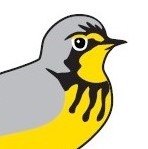By Dr. Doug Tozer, Director, Waterbirds and Wetlands, Birds Canada
The goal of the Long Point Waterfowl and Wetlands Research Program is to conserve waterfowl and other wetland-associated wildlife and their habitats through research and monitoring. Research focuses on the Long Point region and the lower Great Lakes. Over the past three decades, Birds Canada has mentored hundreds of students in waterfowl and wetland science through this program. Most trained with us as university grads, undergrads, or field technicians, completing some of the most influential waterfowl and wetland research in North America. Many of them have gone on to obtain professional positions in the field.
Participants in this program have drafted or published over 90 peer-reviewed scientific manuscripts to date. These manuscripts have been cited in other publications a total of 1500 times! The science from this program has been shared widely through the literature and through presentations, and in turn has had a large collective positive impact on waterfowl, other wildlife, and wetlands across the continent and beyond.
Here are just a couple of recent examples. In August 2019, students and staff shared results from the program at the North American Duck Symposium in Winnipeg. The topics of their four presentations ranged from migratory connectivity of waterfowl based on stable isotopes to testing different ways of manipulating water levels in managed wetlands to benefit waterfowl and other waterbirds. More recently, research results from the program were published in the journal Ecotoxicology and Environmental Safety. The research team found that levels of contaminants, including PCBs and mercury, increased over the course of the winter in Canvasbacks in the Lake St. Clair region. Further research may show whether this impacts the ducks’ survival or ability to breed.

Virginia Rail Photo: Tim Arthur
Projects at the Forefront of Waterfowl and Wetlands Research
Over the past year, the Long Point Waterfowl and Wetlands Research Program focused on 18 research projects, listed below under five themes. All of the projects aim to achieve on-the-ground conservation benefits for waterbirds and wetlands. For a deeper dive, explore the one-page project summaries.
Migratory connectivity of waterfowl
- Spatially explicit network analysis reveals multi-species annual cycle movement patterns of sea ducks
- Origins of harvested Mallards from Lake St. Clair, Ontario: a stable isotope approach
- Migratory connectivity of waterfowl using the Great Lakes
- Origins of harvested American Black Ducks: a stable isotope approach
- Origins of Blue-winged Teal harvested in Ontario relative to Prairie Canada based on stable isotopes: implications for sustainable management
Waterbird habitat relationships
- Mallard resource selection trade‐offs in a heterogeneous environment during autumn and winter
- Hierarchical modeling to identify habitat associations of wetland-obligate birds in Great Lakes coastal wetlands
- Regional modeling of habitat associations for wetland-obligate birds in the Upper Midwest and Great Lakes basin
- Species-habitat relationships and priority habitat areas for marsh-breeding birds in southern Ontario
- Bird community response to changes in wetland extent and lake level in Great Lakes coastal wetlands
Common Loon reproductive success
- Recovery of Common Loon populations on acid-stressed Ontario lakes
Assessing and improving waterbird monitoring and trends
- Standardizing marsh breeding bird point count data from humans and acoustic recorders
- Modeling 22-year trends in marsh breeding bird abundance using the spatially explicit INLA approach
- Modeling detection probability to improve marsh-breeding frog surveys in the Great Lakes region
- Marsh bird monitoring by trained citizen scientists who choose sample sites is comparable to professionals at random sites
Wetland management
- Ecological assessment of wetland management techniques in restored wetlands of the Montezuma Wetlands Complex
- Leveraging a landscape-level monitoring and assessment program for developing resilient shorelines throughout the Laurentian Great Lakes
- Control of invasive Phragmites increases marsh birds but not frogs
For more information on the Long Point Waterfowl and Wetlands Research Program, click here.
Acknowledgements
While we are pleased with the success of the Long Point Waterfowl and Wetlands Research Program, we are also excited for the future. We look forward to many more decades of achieving positive impact for wetland conservation and people. As such, we are indebted to the program’s many partners and supporters, currently including: Black Duck Joint Venture, Canadian Wildlife Service, Ducks Unlimited Canada, Eastern Habitat Joint Venture, Environment and Climate Change Canada, Great Lakes Restoration Initiative, Government of Canada, Government of Ontario, Ontario Ministry of Natural Resources and Forestry, SC Johnson, The Bluff’s Hunting Club, Wildlife Habitat Canada, and Winous Point Marsh Conservancy.
We would also like to thank all supporters of Birds Canada for being part of our waterfowl and wetlands research and conservation work.

Here are some of the young professionals currently supported by the Long Point Waterfowl and Wetlands Research Program, including undergraduate and graduate students, postdoctoral researchers, and research interns located at universities throughout the Great Lakes.
From left to right, top row: Dr. Kristin Bianchini (postdoctoral researcher); Jackson Kusack (PhD); Laura Stewart (research intern).
Bottom row: Dr. Lisa Elliott (PhD); Tara Hohman (MSc); Edward Farley (MSc).

